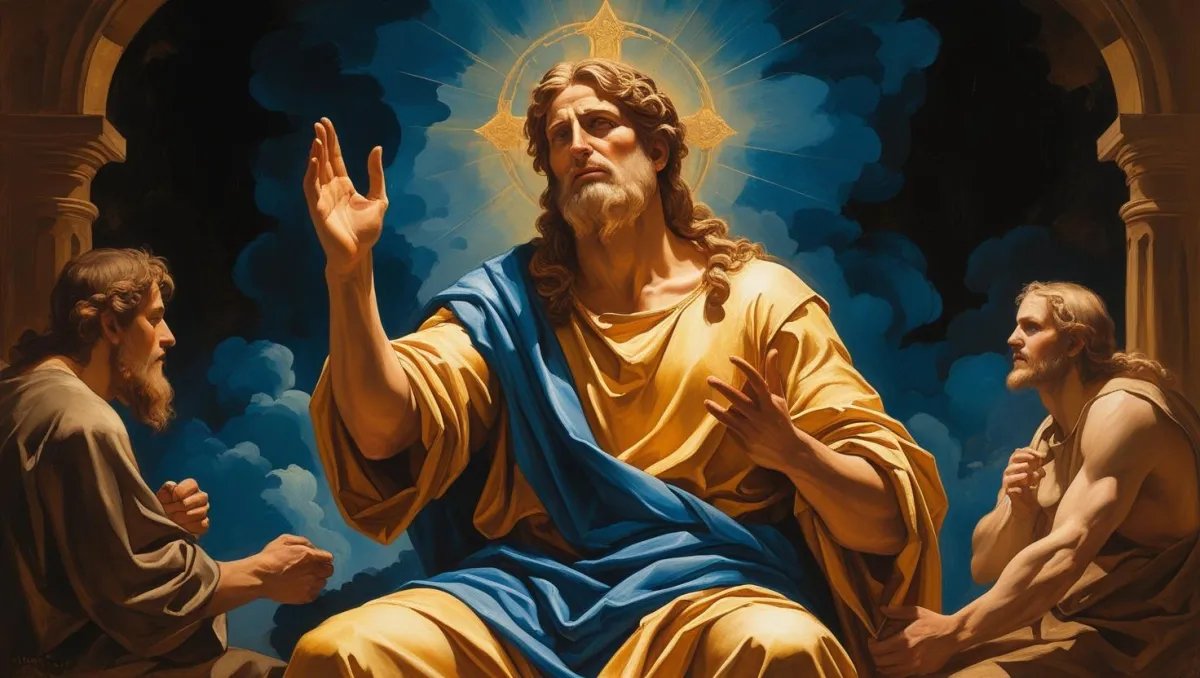
Yahweh's Nature of Justice and Love in Amos
Hello,
Have you ever described a picture? I have. Sometimes, it is difficult to explain unless the individual is familiar with the subject. The discussion is a continuation of an Amos assignment, which is cumulative throughout the class. This is important for fellowshipping with students on their perspective or view on a book of the Bible. Amos is a significant book for understanding the descriptive portrayal of God and its contemporary impact on believers.
The first point is that Amos is a significant book that helps one fully comprehend the descriptive portrayal of God. This first section is critical for understanding the Lord in this book.[1] God's character is seen in His judgments against nations and in His grace and redemption. John Calvin notes that Amos was a shepherd who was socially not received in his hometown of Judah (Amos 1:1).[2] It is interesting to note Yahweh's response in the Minor Prophets, specifically in this book. Here is the section describing the Lord from this Amos study (from another assignment).
In the book of Amos, God is portrayed as a loving God, with messages of judgment and blessing. These are critical criteria as the Israelites are attributed to the Lord's covenantal stipulations. The first piece is the message of judgment. God begins in this book with a roar from Zion, uttering His voice from Jerusalem, in which the pastures and Mt. Carmel mourn and wither (Amos 1:2). In this way, God is described as a lion, declaring His voice from Jerusalem. Another image of the Lord is that He is portrayed as a warrior, tearing down the wall of Rabbah to display the Ammonites' judgment and bringAmos 113-15, 14). Also, God is understood to be the Creator, who destroyed the Amorites and brought His people out of Egypt, even though the Israelites during this time defiled His Law (Amos 2:9-16). Donald Sunukjian writes that the Israelites had violated the Mosaic covenant.[3] He explains further insight into the covenantal curses from the Lord, "The curse of drought appears frequently as a punishment for covenant disobedience (cf. Deut. 28:20–24 in the Mosaic Covenant…" [4]This is critical as the Lord emphasizes judgment to Damascus, Gaza, Tyre, Edom, Ammonites, Moab, Judah, and Israel (Amos. 1:3-2:16). Israel is discussed through most of the entire rest of the book, even going back to the circumstances leading up to the covenant established in the Pentateuch (bringing Israelites out of Egypt, Amos. 3:1b). In the next chapter, God desires that He has provided for His people, and yet they did not return to Him (Amos. 4:6). Furthermore, the Lord laments that to seek Him and live, but no other city, for they will be exiled or destroyed (Bethel shall come to nothing, seek the Lord is repeated in two passages, yet is contextually applied in a third verse: Amos. 5:5-6, 14). Because Israel has left God, He brings judgment upon His people. Yet there is room for redemption.
While the Prophets relay the Lord's messages of judgment, God provides room for blessin if His people recant of their wicked ways and follow Him. Through the first half of the closing chapter, the Lord poses destruction onto Israel, for everything will shake and be torn, yet no pebble shall fall from the Earth (Amos 1-10, 8-9b). In the final area, the Lord adds that on the day of doom, He will raise the booth of David that has fallen and rebuild it as in the days of old (Amos 9:11). Furthermore, the Lord will prosper and bless the nation once again (Amos 9:12-15). This blessing also includes the Gentile nations; these scriptures were used in the New Testament Jerusalem Council meeting for others coming into the faith (Amos 9:11-12; referenced in Acts 15:16-17).[5] This eventually was fulfilled in two-fold. Local context and Messianic context. It is essential to comprehend that the Lord is a just God. The reason these iniquities are befalling Israel is because they disobeyed His Law (knowing the Lord, His covenants and Laws, Amos 1). These are essential characteristics of God in the book of Amos." [6]
This section is significant, as it gives room for the Lord's judgment and concluding hope for restoration. To echo, the Jerusalem council mentioned in Acts was figuring out how Gentiles fit into the narrative of the salvation of Jesus Christ (Acts 1). Peter speaks up and proclaims that it was prophetic for the Gentiles to come into the fold of God; why should there be a yoke on the Lord? They are saved, as we are (Acts 15:6-11). An application to this, why should any individual hold back the Gospel? Everyone who believes in Jesus will be brought into eternal life, the family of the Lord (Jn. 3:16). William Larkin, in providing historical background, speaks on how this Scripture applies to Theophilus, whom Luke was writing in his Gospel, and this letter (Lk. 1:1; Acts. 1:1).[7] Therefore, the Lord does not change; He is the same today, yesterday, and forever (Heb. 13:8).
The second point is that Amos is a significant book that fully comprehends the contemporary impact of believers. The question to consider is, how does God's response in Amos apply to learning today? The application for Christians to fully love and worship the Lord is understanding their perception of Him and having a solid Christian worldview. Formally in theology, this is described as Theology Proper or Prolegomena. The reason this field was chosen is that this area significantly influenced the structure of Amos' book. The first eight and a half chapters show the Lord's judgment (Amos 1-910). The final part of the book explains the Lord's redemption (Amos 9:1-15).
Perception plays a significant role in comprehending God, Jesus Christ, the Holy Spirit, the Trinity, angels, demons, man, the church, the Christian walk, and everything. For example, if the writer of this study had a poor perception of God, it would negatively affect how this writer views the Lord. One example is that in an elementary school, a young Christian followed the Lord, read the Bible, and prayed to Christ. But, his misrepresentation of the Lord was in upholding His Law and requirements to the extreme, and this individual started cultivating legalism. Having the proper perspective of God helps in a Christian's walk with Christ. The speculation is that Israel lacked a clear understanding of God and sought other nations because they seemed "correct." As God describes Israel as oppressing cattle, Donald Sunukjian provides the details of a definition of their actions, "The words oppress, and crush describe threats and physical harassments used to squeeze money from the helpless" (Amos 4:1).[8] It is critical to understand that Israel was in sin, needing a Savior. These judgment and redemption aspects impact systematic theology and the Christian worldview.
In conclusion, Amos is a significant book for fully comprehending God's descriptive portrayal and the contemporary impact of believers. My call to action is to reflect on the Lord's nature, both His justice and loving responses. Do you see His grace in both attributes of God? Have an enjoyable day!
God bless,
Rockwell
PS - In future material, more discussion on the book of Amos!
Bibliography
Calvin, John, and John Owen. Commentaries on the Twelve Minor Prophets. Bellingham, WA: Logos Bible Software, 2010.
Funtal, Rockwell. Minor Prophets Study: Imagery and Metaphor. Lynchburg, VA: Liberty University, 2022.
Larkin, William J., Jr. Acts. Vol. 5. The IVP New Testament Commentary Series. Westmont, IL: IVP Academic, 1995.
Sunukjian, Donald R. "Amos." In The Bible Knowledge Commentary: An Exposition of the Scriptures, edited by J. F. Walvoord and R. B. Zuck. Wheaton, IL: Victor Books, 1985.
[1] Unless otherwise noted, all Scripture references are in the English Standard Version.
[2] John Calvin and John Owen, Commentaries on the Twelve Minor Prophets, vol. 2 (Bellingham, WA: Logos Bible Software, 2010), 149.
[3] Paraphrase, Donald R. Sunukjian, "Amos," in The Bible Knowledge Commentary: An Exposition of the Scriptures, ed. J. F. Walvoord and R. B. Zuck, vol. 1 (Wheaton, IL: Victor Books, 1985), 1427.
[4] Ibid.
[5] Walvoord and Zuck, Bible Knowledge Commentary, 1451.
[6] Funtal, Rockwell. Minor Prophets Study: Imagery and Metaphor (Lynchburg, VA: Liberty University, 2022), 4-5.
[7] William J. Larkin Jr., Acts, vol. 5, The IVP New Testament Commentary Series (Westmont, IL: IVP Academic, 1995), Ac 15:1–35.
[8] Walvoord and Zuck, Bible Knowledge Commentary,


